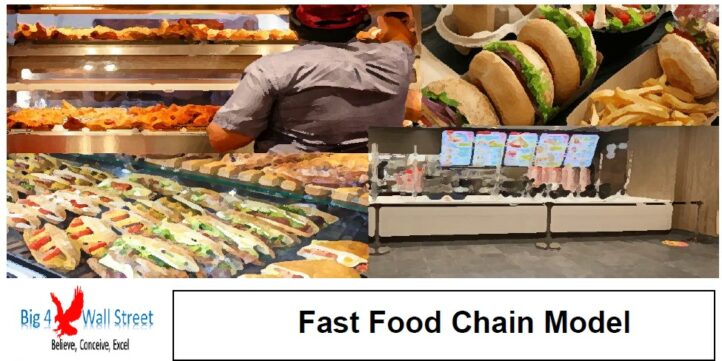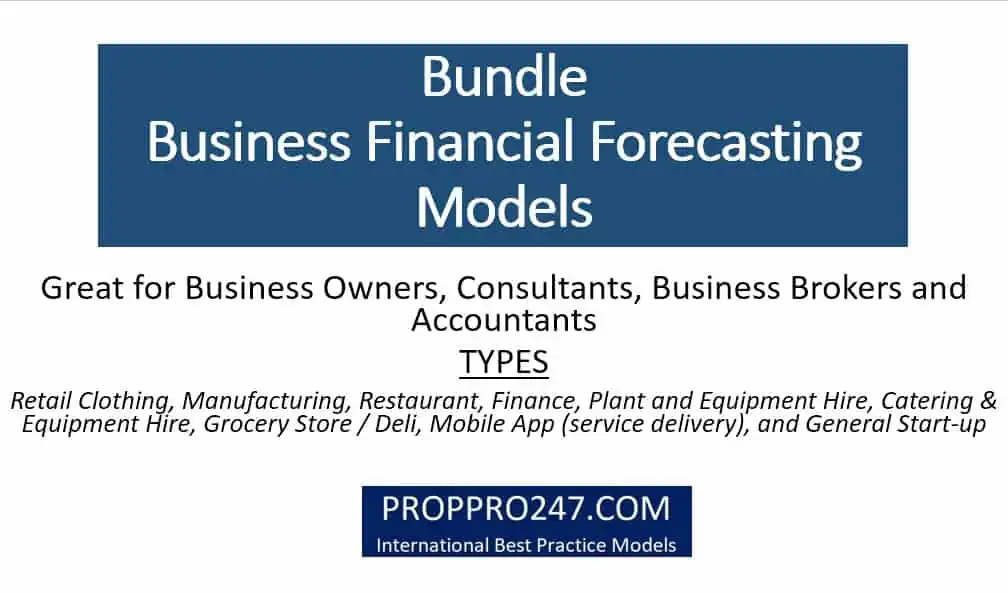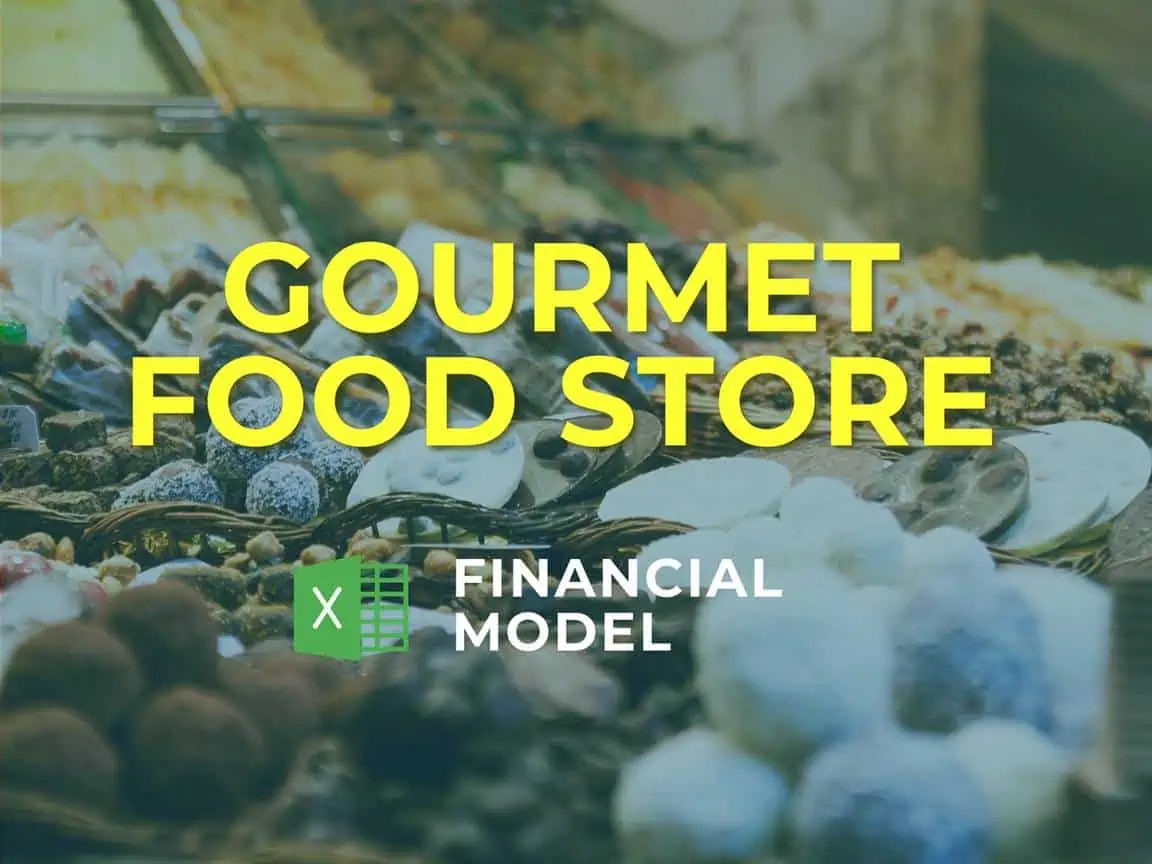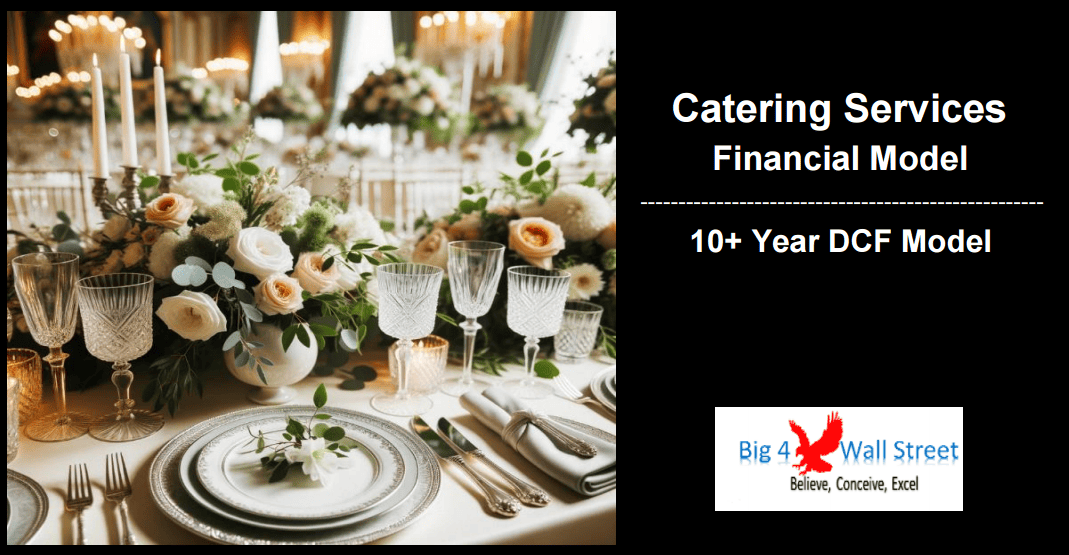Fast Food Chain Financial Model
The financial model presents the business case of a startup fast-food chain. The model accommodates up to 20 outlets with business and financial assumptions for each outlet. This financial model template will enable you to: – Plan the sources of monetization from each store and decide whether to continue operating or close the store – Forecast the revenues – Analyze the direct costs for running the outlets. – Setting up payroll costs, and operating expenses. – Set the initial investment amount and the equipment needed – Set the relevant currency and timing – Create the three financial statements (Profit and Loss, Balance Sheet and Cash Flow) monthly for 60 months. – Financial Ratios to check the viability of your business – Valuation with Free Cash Flows to the firm to get a ballpark figure of the value of your business – Graphs and charts you can use in your presentations – Dashboard to check the plan for each of your stores – Printable model as PDF for your investors.

The financial model presents the business case of a startup fast-food chain. The model accommodates up to 20 outlets with business and financial assumptions for each outlet.
This financial model template will enable you to:
– Plan the sources of monetization from each store and decide whether to continue operating or close the store
– Forecast the revenues
– Analyze the direct costs for running the outlets.
– Setting up payroll costs, and operating expenses.
– Set the initial investment amount and the equipment needed
– Set the relevant currency and timing
– Create the three financial statements (Profit and Loss, Balance Sheet, and Cash Flow) monthly for 60 months.
– Financial Ratios to check the viability of your business
– Valuation with Free Cash Flows to the firm to get a ballpark figure of the value of your business
– Graphs and charts you can use in your presentations
– Dashboard to check the plan for each of your stores
– Printable model as PDF for your investors
Moving on to the inputs tab, you can adjust the various assumptions of the model based on the specifications and requirements of your business. So effectively you can adjust the detailed revenue assumptions and the user can amend the most important drivers such as: investing month, operations start, operations end, sales seasonality, and food and drink sales for each outlet.
Moving on, the cost is comprised of three main categories: direct costs (for food and drinks), fixed and variable non-labor cost (rent, utilities, insurance, advertising, other, etc.), labor cost for both stores and headquarters (headcount, salaries, employment costs, and other benefits). Going forward you can adjust noncurrent assets, CAPEX, as well as their depreciation schedule, the working capital assumptions (inventory, receivables, and payables), can also be adjusted accordingly, and finally, the financing assumptions of the business whether these are debt or equity-financed can also be amended.
On the calculation tab, all calculations are performed instantly without the need for an excel macro. The calculations follow the same logical flow as in the inputs tab. As already mentioned, no inputs from the use are needed here, as all the inputs are fed in the yellow cells on the inputs tab only.
On the Financial Statements tabs, you can see the resulting income statement, balance sheet as well as the cash flow of the company and or project. These financial statements are generated on a monthly as well as on a yearly basis.
In the Valuation tab, the valuation of the company is performed based on the free cash flows to the firm. In the same tab, you can also find some feasibility metrics such as Return on Equity, Return on Assets, Internal Rate of Return, and Cash on Cash Multiple. On the same tab, various ratios and margins are presented.
In the Sources and Uses tab, the user is presented with the sources of financing, and how the funds are used in the business.
In the Actual tab, the user needs to set the actual figures from the operations of the business in the yellow cells, then these inputs are compared with the planned figures in the Plan tab. In the Actual versus Budget tab, the user can select the period he desires to compare actuals with planned values. The comparison of the actuals versus planned values in terms of absolute and percentage variation is presented in columns K and M. The same comparison with a graphical representation can be found on the next tab with the Actual versus Budget Graphs.
The most important business and financial KPIs are in the Graphs tab. For example: Revenues Costs, Financials, Profitability, Debt and Equity, Cash Flows as well as discount rates, valuation, and returns.
On the Per Store tab, the user is able to select any combination of outlets stores and see the sales and profitability of each store (sales, gross profit, EBITDA, Net Income) as well as its financing (investment, debt, equity, interest, repayments).
Finally, the checks tab where the most critical checks are aggregated on this page. Whenever you see an error message on any page, you should consult this page to see where the error is coming from.
Similar Products
Other customers were also interested in...
Pizzeria Financial Model Excel Template
Get Your Pizzeria Budget Template. Excel template - robust and powerful. This is your solid foundati... Read more
Coffee Shop – The Customer-Centric Financial...
Starting a Coffee Shop without a financial plan is like driving a car blindfolded. You wouldn´t do ... Read more
Bundle – Business Financial Forecasting Mode...
The purpose of this Bundle of Business Forecasting and Financial Models is to assist Business Owners... Read more
Gourmet Food Store Financial Model Excel Template
Gourmet Food Store Financial Model Allows you to start planning with no fuss and maximum of help . S... Read more
Catering Services Business Financial Model (10+ Yr...
The catering services business financial model is a comprehensive tool designed to analyze the finan... Read more
Food Sector Bundle (6 Models)
Planning to start a food business but can’t decide on the profitability of your investment? Why do... Read more
Start Up Food Truck Business Financial Model
Start Up Food Truck Business Financial Model presents the case of an investment in a food truck busi... Read more
Coffee and Snack Financial Model
This is a financial model for starting a coffee shop with snacks. The model supports both sitting cl... Read more
Restaurant Financial & Business Plan
Restaurant Financial & Business Plan consists of a financial model in excel and a business plan ... Read more
Start Up Restaurant Financial Model Template
This detailed, yet easy to use three statement financial model will allow you to calculate your busi... Read more
You must log in to submit a review.



























